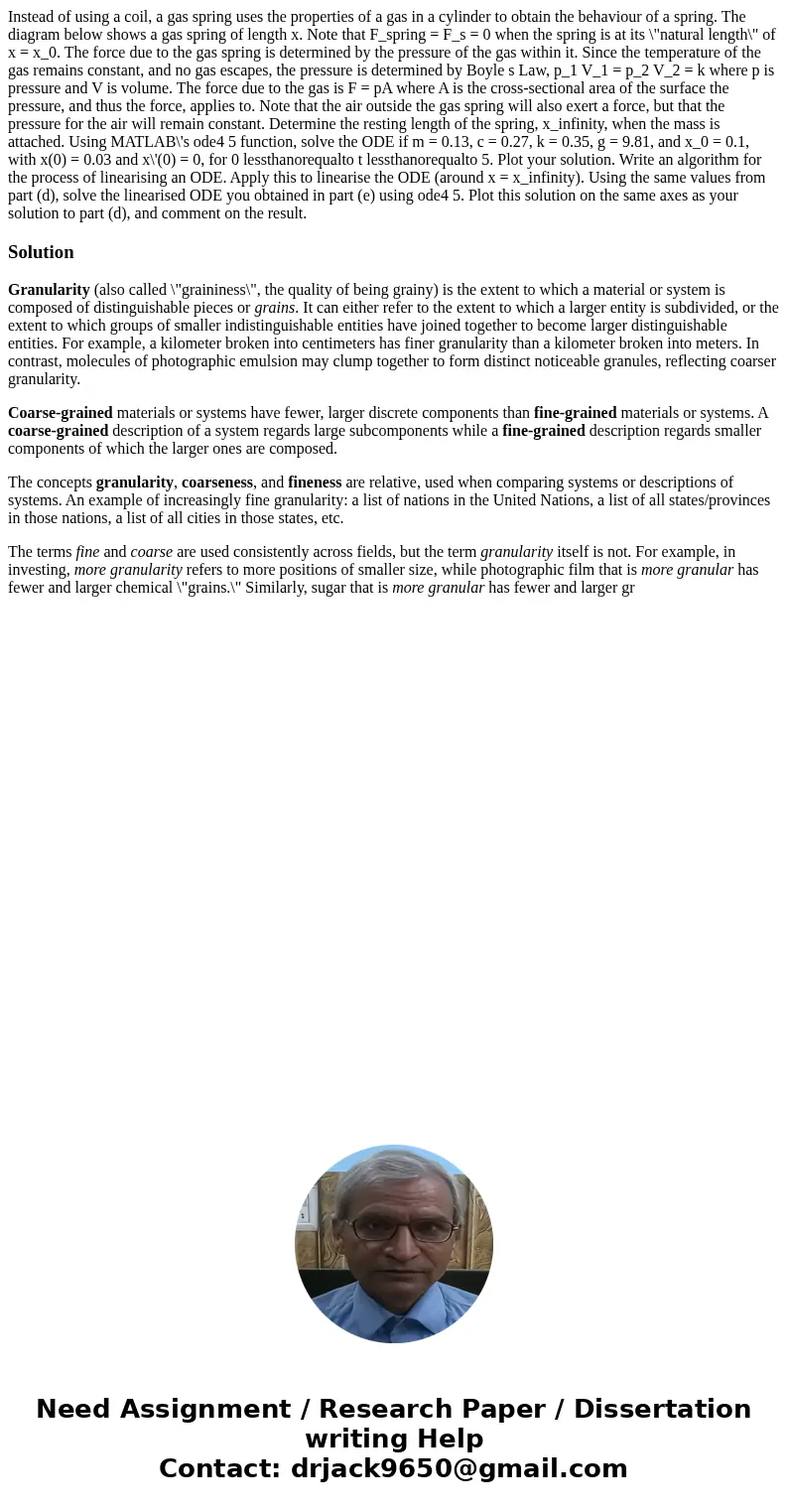Instead of using a coil a gas spring uses the properties of
Solution
Granularity (also called \"graininess\", the quality of being grainy) is the extent to which a material or system is composed of distinguishable pieces or grains. It can either refer to the extent to which a larger entity is subdivided, or the extent to which groups of smaller indistinguishable entities have joined together to become larger distinguishable entities. For example, a kilometer broken into centimeters has finer granularity than a kilometer broken into meters. In contrast, molecules of photographic emulsion may clump together to form distinct noticeable granules, reflecting coarser granularity.
Coarse-grained materials or systems have fewer, larger discrete components than fine-grained materials or systems. A coarse-grained description of a system regards large subcomponents while a fine-grained description regards smaller components of which the larger ones are composed.
The concepts granularity, coarseness, and fineness are relative, used when comparing systems or descriptions of systems. An example of increasingly fine granularity: a list of nations in the United Nations, a list of all states/provinces in those nations, a list of all cities in those states, etc.
The terms fine and coarse are used consistently across fields, but the term granularity itself is not. For example, in investing, more granularity refers to more positions of smaller size, while photographic film that is more granular has fewer and larger chemical \"grains.\" Similarly, sugar that is more granular has fewer and larger gr

 Homework Sourse
Homework Sourse